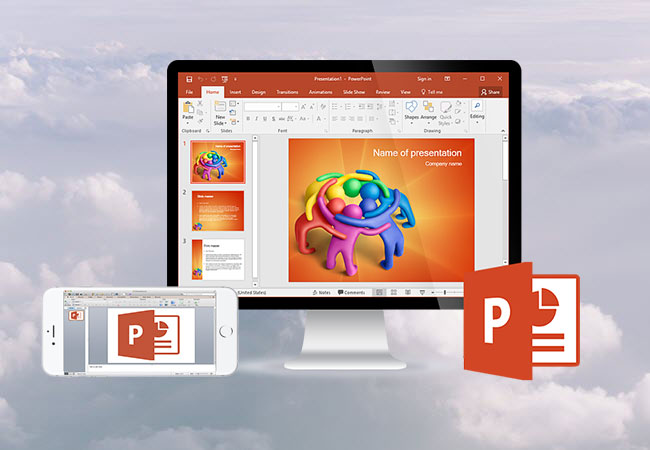To inform, convince your audience, and prompt them to take action, tap into their emotions with impactful visual aids! PowerPoint, a presentation program that has been on the market for almost 40 years, continues to generate enthusiasm. Launched on April 20, 1987, initially for Macintosh computers, it provides users with numerous ways to display multiple presentations. Since 1994, PowerPoint has been integrated into Microsoft Office’s development.
The presentation support serves as an accompaniment. It should highlight your ideas, key concepts, and/or important figures with short and simple sentences. This is a time-limited exercise, so it is necessary to create support that is as concise as possible. The lighter and faster the presentation, the more attention it attracts from your audience. All attention should focus on you, not on the support. Therefore, do not read what is on the screen; instead, develop your ideas, illustrate them with visuals that will also help you remember your points.
PowerPoint is a tool that conveys information and often convinces the audience when decisions need to be made. If you want to create a impactful presentation that will resonate with your audience, here are some principles to follow:
- Don’t leave it until the last minute; take the necessary time (minimum 36 hours of preparation).
- Plan and structure your content to develop your message.
- Bring out keywords related to this message.
- Minimize the text on your slides.
- Eliminate bullet-point lists.
- Illustrate with impactful and high-quality visuals.
- Tell a story.
- Integrate one idea per slide.
- Maintain a graphic consistency throughout your support.
Some Tips
PowerPoint allows you to use contrasts, images, animations, and be a real support for oral presentations.
- Utilize the 10-20-30 rule defined by Guy Kawasaki: 10 slides for conciseness, 20 minutes for presentation (beyond which audience attention decreases), and a font size of 30 for less text on your slides.
- Use a maximum of 5 lines per slide and do not exceed 6 words per line.
- Respect the consistency of fonts and their size throughout the support.
- Avoid Clipart images (too common) and personalize your support with visuals tailored to your message.
- Avoid incorporating animations, unnecessary shapes, or shadows if they do not add value to your message.
- Work on contrasts sharply, considering the projection that often distorts colors and makes some supports illegible.
- Do not be afraid to leave 50% of your slide empty; it highlights your idea and showcases elements in relation to each other.
Your carefully crafted presentation will allow you to:
- Convey your key messages.
- Enhance your presentation.
- Highlight your ideas.
- Capture and retain the attention of your audience.
The 6 Questions to Ask Before Creating a PowerPoint Presentation:
- What message should my audience remember from my PowerPoint presentation?
- How should I structure my presentation to convey my message in the most dynamic and clear way?
- What graphic and visual message should I communicate to my audience for them to visualize my points clearly?
- How should I present the content of my offer in a clear and impactful way?
- Is my presentation personalized enough?
- Are my ideas clearly expressed?



